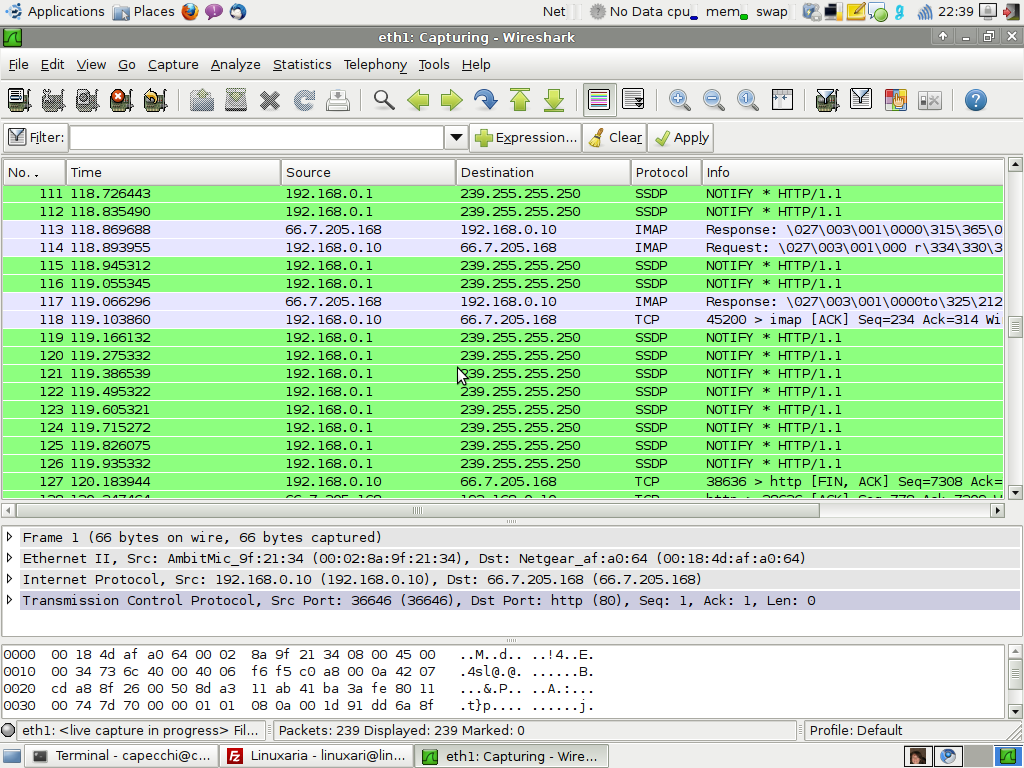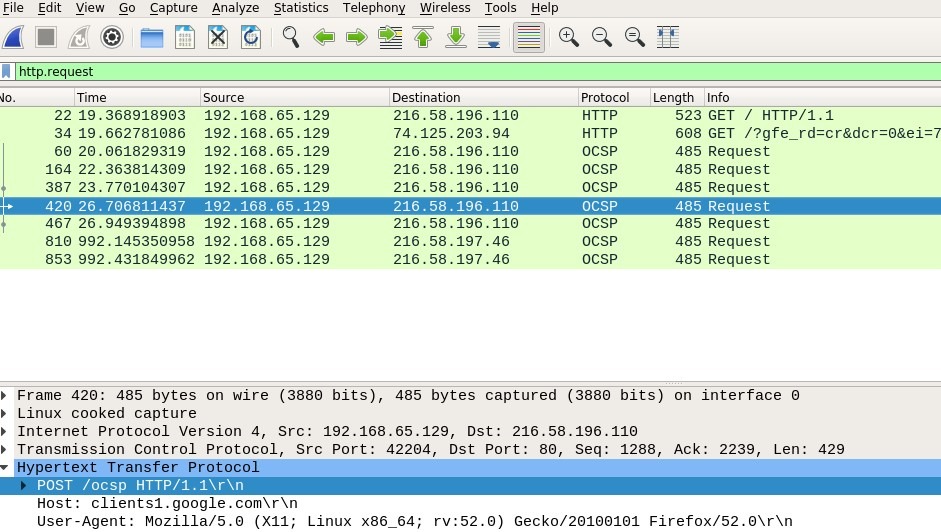

(http.request or = 1) and !(udp.port eq 1900) Therefore, I filter this out using the following expression: SSDP is a protocol used to discover Plug & Play devices, and it is not associated with normal web traffic. This HTTP traffic over UDP port 1900 is Simple Service Discovery Protocol (SSDP).
#Wireshark filters windows 7#
However, I also generate pcaps of traffic using Windows 7 hosts, and this traffic includes HTTP requests over UDP port 1900 during normal activity. Filtering on web traffic using the previous tutorial's pcap. Filtering on http.request or = 1 outlines the flow of events for this web traffic.įigure 5.
#Wireshark filters windows 10#
In the pcap, the user was on a Windows 10 computer using Microsoft's Edge web browser. My previous tutorial contains web traffic generated when a user viewed a URL from atodaycom in August 2018. The value http.request reveals URLs for HTTP requests, and = 1 reveals domains names used in HTTPS or SSL/TLS traffic. Filters for Web-Based Infection TrafficĪs noted in my previous tutorial on Wireshark, I often use the following filter expression as a way to quickly review web traffic in a pcap: For example, if you want to specify all traffic that does not include IP address 192.168.10.1, use !(ip.addr eq 192.168.10.1) instead of ip.addr != 192.168.10.1 because that second filter expression will not work properly. When specifying a value exclude, do not use != in your filter expression. contains microsoft or contains windows.The following expressions are commonly used:Įxamples of these filter expressions follow: Wireshark's display filter uses Boolean expressions, so you can specify values and chain them together. Example of Wireshark's display filter accepting an expression, but it does not work as intended. Wireshark's display filter accepts an expression, and it works as intended.įigure 4.

Wireshark's display filter offering suggestions based on what you type.įigure 3. If the display filter bar turns yellow, the expression has been accepted, but it will probably not work as intended.įigure 2. If the display filter bar turns green, the expression has been accepted and should work properly. While the display filter bar remains red, the expression is not yet accepted. If you type anything in the display filter, Wireshark offers a list of suggestions based on the text you have typed. Location of the display filter in Wireshark.

This is where you type expressions to filter the frames, IP packets, or TCP segments that Wireshark displays from a pcap.įigure 1. Wireshark's display filter a bar located right above the column display section. Proper use of the Wireshark display filter can help people quickly find these indicators. Security professionals often document indicators related to Windows infection traffic such as URLs, domain names, IP addresses, protocols, and ports. These indicators are often referred to as Indicators of Compromise (IOCs). Indicators consist of information derived from network traffic that relates to the infection. These infections can follow many different paths before the malware, usually a Windows executable file, infects a Windows host. This tutorial uses examples of Windows infection traffic from commodity malware distributed through mass-distribution methods like malicious spam (malspam) or web traffic.
#Wireshark filters how to#
This is not a comprehensive tutorial on how to analyze malicious network traffic. And you should also have a basic understanding of how malware infections occur. Keep in mind you must understand network traffic fundamentals to effectively use Wireshark. Pcaps for this tutorial are available here. It covers display filter expressions I find useful in reviewing pcaps of malicious network traffic from infected Windows hosts. Today's post provides more tips for analysts to better use Wireshark. To better accomplish this work, I use a customized Wireshark column display as described my previous blog about using Wireshark. As a Threat Intelligence Analyst for Palo Alto Networks Unit 42, I often use Wireshark to review packet captures (pcaps) of network traffic generated by malware samples.


 0 kommentar(er)
0 kommentar(er)
